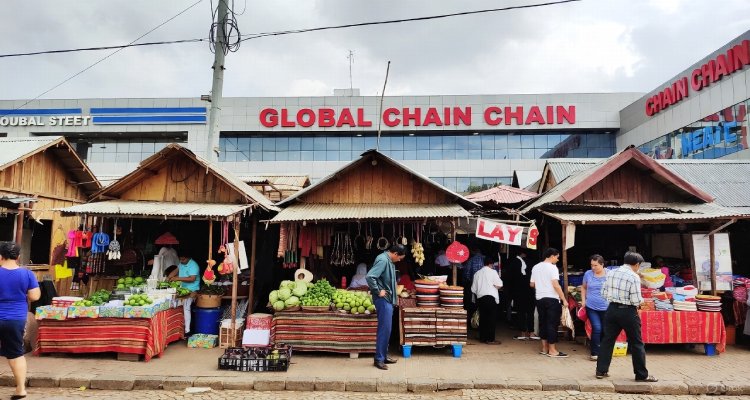The Secret Nightlife of Trees
Discover the hidden nighttime world of trees—how they move, communicate, heal, and reshape forests after dark in ways science is only beginning to understand.
Introduction (Hook)
On a warm summer night deep inside the Shenandoah forest, a researcher switches off her headlamp. In the darkness, the trees seem still—monumental, silent, eternal. But as her infrared sensors begin to glow, a different truth emerges: the forest is moving. Branches subtly lower, trunks release stored moisture, and networks beneath the soil fire with chemical messages.
For centuries, humans assumed that trees slept as passively as they appeared. But new discoveries reveal that forests undergo a complex, vibrant nightlife—an unseen choreography of rest, repair, communication, and survival.
Context & Background
For decades, tree science focused almost entirely on daylight activity: photosynthesis, carbon intake, temperature regulation. What happened at night was considered negligible or simply the absence of sunlight-driven processes.
But over the last 10 years, advancements in laser scanning, time-lapse imaging, sap-flow sensors, and soil-microbe sequencing have allowed scientists to monitor forests 24/7. What they found overturned long-held assumptions.
Trees don’t “turn off” at night.
They adjust, recharge, redistribute, and in some cases, communicate more at night than during the day.
From the Amazon to the Carpathians, nighttime scans showed consistent, mysterious behaviors—branches drooping, water columns shifting, root networks pulsing with nutrient exchanges. These patterns triggered a wave of new research exploring what trees really do when the world goes dark.
Main Developments: What Happens After Dark
Branches Gently Fall—Like Sleeping Limbs
A landmark nighttime laser-scanning project in Finland revealed that birch trees drop their branches by nearly 10 centimeters every night. The movement resembles a slow exhale, likely a sign of “sleep” or reduced internal pressure.
This isn’t unique to birch trees—other species show similar nightly droops, each with its own rhythm.
Roots Become Hyperactive Underground
Daytime draws water upward; nighttime sends it downward.
After sunset, roots expand their search radius, absorbing nutrients that dry daytime soil can’t release. Microbial partners, especially fungi, increase their activity, sending chemical signals through the forest’s underground “internet”—the mycorrhizal network.
Night is when much of the forest’s information exchange happens: stress signals, nutrient offerings, warnings of drought or pests.
Trees Repair Their Internal Systems
Just as humans undergo cellular repair during sleep, trees use nighttime to mend internal damage. Sap flow slows but doesn’t stop; instead, it redirects toward tissues needing restoration. Microfractures in trunk fibers seal themselves, and water potential gradually resets to prepare for sunrise.
Breathing Changes—and Tells a Story
Though we think of trees as inhaling carbon dioxide, their nighttime respiration flips the script. They release small amounts of CO₂—scientists now use these nighttime emissions to study a forest’s age, health, and stress levels. A spike, for instance, can indicate trauma from drought or heat waves.
Some Trees Glow—Literally
In tropical regions, bioluminescent fungi living on bark and fallen logs emit a faint green light—an otherworldly glow that locals call “ghost lights.” While the trees themselves don’t glow, their nighttime ecosystem creates luminous corridors used by insects and small mammals.
Nighttime Weather Shapes Forests
Without sun-driven convection, forests generate their own microclimates. Humidity rises. Leaf surface temperature drops. This nightly cycle determines how forests regulate global moisture and carbon—an impact far bigger than scientists once believed.
Expert Insight & Public Reaction
“Night is the forest’s busiest biological window,” says Dr. Elena Roemer, a plant physiologist at the University of Vermont. “We used to think trees shut down after sunset. Now we know it’s the opposite—nighttime is when forests make some of their most important decisions.”
Foresters and ecologists are also paying attention.
Nighttime monitoring revealed early signs of drought stress weeks before daytime measurements noticed anything unusual. This is reshaping how conservation teams assess vulnerable forests.
Public fascination has grown alongside these revelations. Videos showing trees “breathing” at night—subtle rising and falling motions captured through time-lapse—have gained millions of views online. Many viewers say it transforms how they think about nature: not as static scenery, but as living communities with daily rhythms of their own.
Impact & Implications: Why It Matters
Better Climate Models
Nighttime forest activity is now a critical addition to global carbon modeling. If trees redistribute water and repair themselves at night, ecosystems may absorb or release far more carbon than previously calculated.
Early Warning Systems
Changes in nighttime branch height or sap flow can warn of drought, disease, or insect attacks before visible symptoms appear. This gives forest managers a powerful new tool for protecting vulnerable regions.
Urban Planning & Green Cities
Understanding nighttime tree physiology is changing how cities design green spaces. Streetlights, for example, can interfere with tree “sleep,” increasing stress and reducing lifespan.
Impacts on Wildlife
Nocturnal creatures—from owls to beetles—depend on the microclimates forests create after dark. If nighttime tree rhythms shift due to warming temperatures, entire ecosystems may feel the ripple effects.
Conclusion
The more scientists observe forests at night, the more they realize that trees live dynamic, hidden lives beyond daylight. They breathe, shift, communicate, and heal—quietly shaping the very ecosystems humanity depends on.
The forest we see during the day is only half the story.
Its secret nightlife—busy, intelligent, and deeply interconnected—may hold answers to some of the most urgent environmental questions of our time.
Disclaimer This article is for informational purposes only. It summarizes current scientific understanding and does not substitute for professional ecological research or forest management advice.










